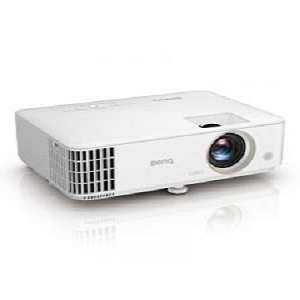Top things to know While Choosing A Home theatre projector.
Welcome to Aussie Lamp Centre! May you want to watch a movie with your friends, or may you want to spend time with your family. Whatever the reasons, it's critical to locate one that meets your requirements. Although they may all appear to be identical, home theatre projectors range greatly in terms of their features and performance. We'll go into further detail after giving you a thorough rough idea. Here are the top 7 criteria you should look for when purchasing a home theatre projector.
Color technology:- Color technology combines red, green, and blue light at changing intensities to create the colors seen on televisions, computer displays, and projectors. Various different colors can be reproduced by the resulting combinations in RGB color space. However, especially for untrained users, the correlation between the amounts of red, green, and blue light and the final color is easy to understand.
Digital Light Processing projectors will predominate in the market for home theatre projectors (DLP). Tiny mirrors are used by DLP projectors to reflect light. A color wheel is also used by DLP projectors (a spinning wheel with multiple color filters). These projectors often produce higher contrast and are portable. What significance does color have? Standard Red, Green, and Blue (SRGB) is typically used as the default color setting by projector makers.
Resolution: Here is a straightforward rule to remember when choosing a projector's resolution: the greater the resolution, the clearer the image will be and the less likely it is to display pixelated content. You should choose a projector based on the content you frequently watch from the market's selection of projectors, which range in resolution from 720p to 4K Ultra HD.
Contrast:- In its simplest form, contrast is defined as the ratio of light reflected from an all-white image to an all-black one. The white image is 3000 times brighter than the black image, according to a projector with a 3000:1 contrast ratio. Whether it's statistics, images, graphs, text, or video, the more contrast ratio, the more detail you can see on the projected image. We are able to distinguish the finer color nuances because of contrast. In order to perceive the details, excellent contrast is essential.
Full On/Off and ANSI Contrast are the two most popular methods for determining contrast. Full On/Off is frequently employed in the sector and is simple to manipulate, producing false results. Other than by manufacturers in specialized niches, the ANSI approach is rarely utilized in the business since it is difficult to manipulate, and provides relatively small but significantly more accurate and useful statistics.
Brightness: It's important to consider a projector's color brightness when buying one because the best projectors produce an equal amount of white and colored light. The picture visibility and clarity increase as they both rise in elevation. However, the majority of projector datasheets and technical specification papers solely highlight their white light output.
Some projectors only specify white brightness levels in their datasheets, despite the fact that people commonly conflate "brightness" with both. When this occurs, your visual experience is negatively impacted. You could check the color brightness of the projector model you're contemplating at https://www.aussielampcentre.com.au/.
Input/output connectivity: You need to consider connectivity because you need to connect your projector to the original source, such as a laptop or gaming console, in order to display movies, games, or any digital image through the projector. While many projectors have VGA ports, providing you with a variety of alternatives, an HDMI port is typically needed for gaming.
Room Size: Regardless of whether you live alone or with a family, the area where your projector is placed will affect how you choose to watch movies. You must first decide whether to put your projector in the center or on each side of the room, depending on its size and style. The space may be restricted, particularly if you have a family. Choose a projector that can adapt its image depending on where it is placed if you plan to mount it on a table or the ceiling. Depending on the projector's position and angle, the picture can be adjusted using short-throw projectors, lens shift features, and sideways keystone correction.
Hope you understand what we are explaining in this article.

Comments
Post a Comment